Google Books’ ngram tool lets you search and compare mentions of various terms in books that they’ve digitized. I ran some city names through it to see how the relative level of mentions of these places has changed over time. These aren’t perfect. Some city names are too generic to really isolate, like Columbus (could refer to Christopher) or Charlotte (a common name). Others I assumed do typically refer to the major city of that name, but have other uses as well (Paris, St. Louis). Also, these are English language city name searches, and I’m not sure how much international literature Google has digitized anyway.
With that in mind, here are some charts. First, a look at three major global cities:
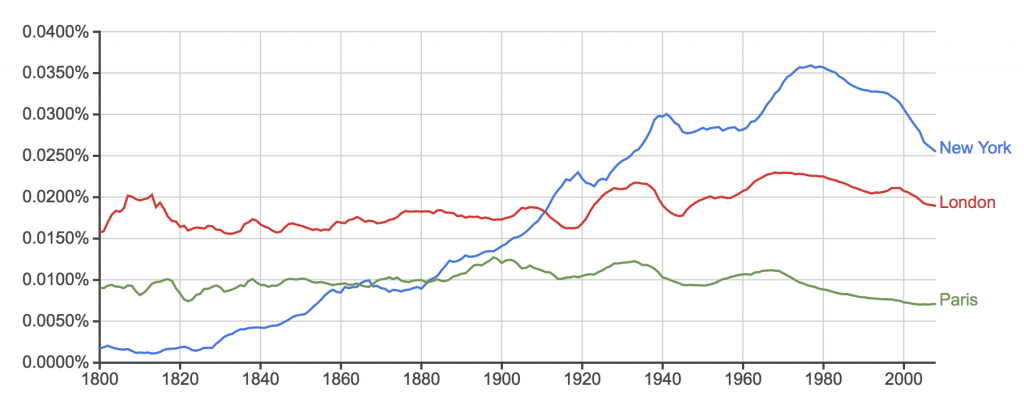
It’s interesting that London and Paris have been pretty consistent over time. New York has soared as it grew from a colonial town to premier global capital.
Here are some prominent Asian cities. Note that Tokyo was named Edo until 1868. (I left off Beijing because it was transliterated as Peking until recently).
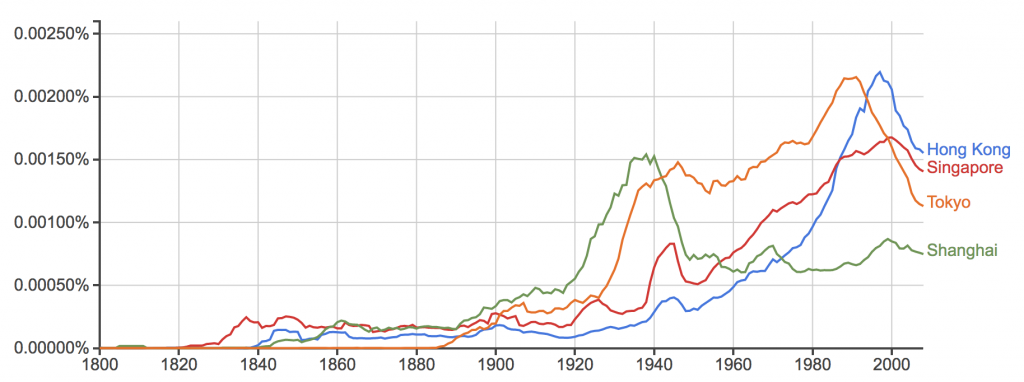
Here are some other major, established US cities.
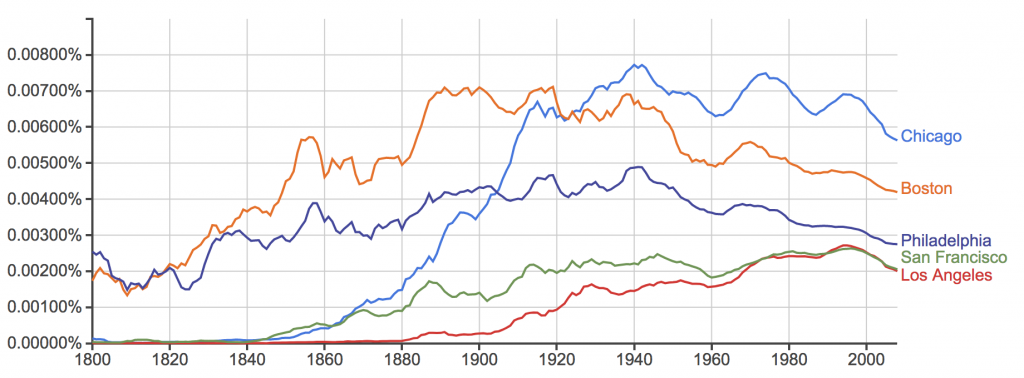
Despite the rise of the West Coast, LA and SF haven’t gotten as much love. Chicago’s rise is especially notable.
Here are some Sunbelt cities compared.
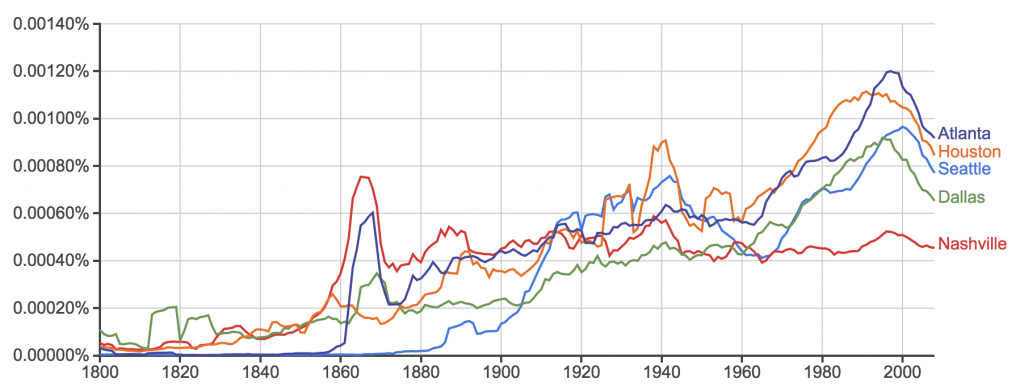
And some Midwest cities.
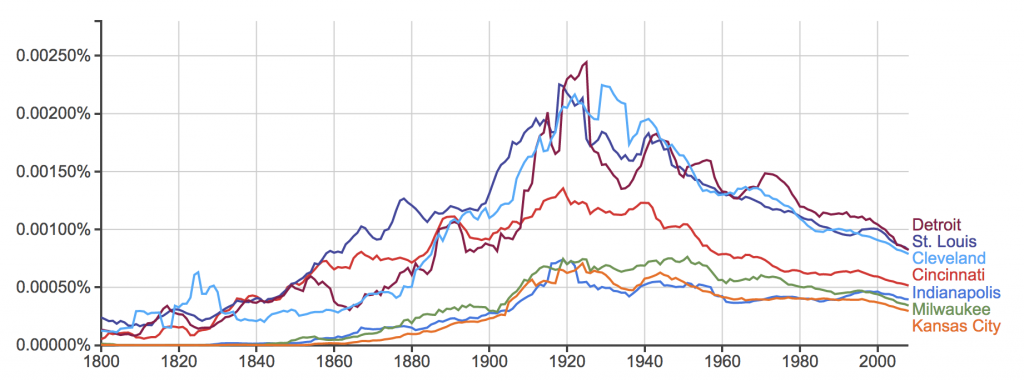
There’s a big peak around 1920. You see it also in Chicago above (too many mentions to easily fit on this chart), though in Chicago’s case it didn’t decline.
Heres a zoom in on Cincinnati vs. Indianapolis.
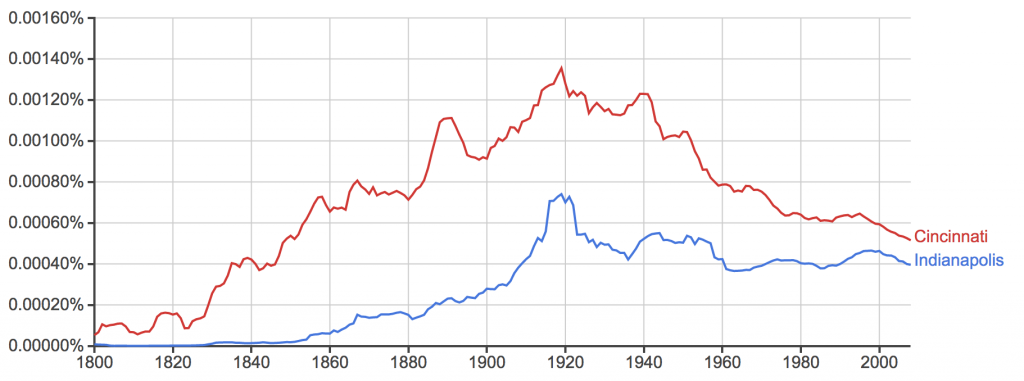
We see here mirrored that Cincinnati was once a very major city, and a different class than Indy really, but how that gap has essentially closed over the years as Cincinnati’s relative importance declined.
The ngram viewer is a fun tool play with, so check it out.
from Aaron M. Renn
http://www.urbanophile.com/2018/03/09/the-rise-and-fall-of-cities-in-books/
No comments:
Post a Comment